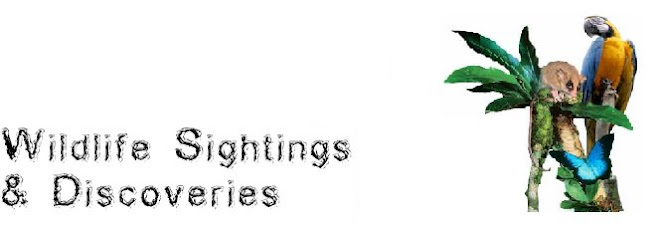
10 amphibians believed to be new to science have been discovered in Colombia, in addition to the recent discovery of 12 new frogs in India. The Colombia discoveries include a spiky-skinned, orange-legged rain frog, three poison dart frogs and three glass frogs, so called because their transparent skin can reveal internal organs.
The species were discovered during a recent Rapid Assessment Program (RAP) expedition in Colombia's mountainous Tacarcuna area of the Darien, near the border with Panama. The expedition was led by herpetologists from Conservation International (CI) in Colombia and ornithologists from the Ecotrópico Foundation, with the support of the local Emberá community of Eyakera.
754 amphibian species recorded in ColombiaOver a period of three weeks, the scientists identified approximately 60 species of amphibians, 20 reptiles and almost 120 species of birds, many of them apparently found no where else.
The potentially new species of amphibians include three glass frogs of the Nymphargus, Cochranella and Centrolene genus; three poison dart frogs of the Dendrobatidae family (Colostethus, Ranitomeya and Anomaloglossus genera), one harlequin frog of the Atelopus genus, two species of rain frogs of the Pristimantis genera and one salamander of the Bolitoglossa genus. Colombia holds one of the most diverse amphibian communities in the world, with 754 species currently recorded.
Mammals recorded - Tapir, peccary and 4 monkey speciesIn addition to the new discoveries, the expedition recorded the presence of large mammals such as Baird's tapir (Tapirus bairdii), listed on the IUCN Red List as Endangered in Colombia, and four species of monkeys, including Geoffroy's spider monkey (Ateles geoffroyi), Geoffroy's tamarin or red crested bare-faced tamarin (Saguinus geoffroyi), white-throated capuchin or Gorgona white-fronted capuchin (Cebus capucinus) and the mantled howler monkey (Alouatta palliata). They also found populations of white-lipped peccary (Tayassu pecari).
Other surprising findings included the presence of Central American species recorded for the first time in the northern area of South America, including a salamander (Bolitoglossa taylori), a rain frog (Pristimantis pirrensis), a small lizard (Ptychoglossus myersi) and a snake not yet identified.
"Once more we confirm we are leaders in natural diversity and not only in our region but in the world. Without a doubt this discovery represents a great milestone for science and human health," said Colombia's Minister of Environment Juan Lozano.
"Canaries in the mine"Scientists consider amphibians important indicators of ecosystem health. With porous, absorbent skin, they often provide early warnings of environmental degradation caused by acid rain, or contamination from heavy metals and pesticides that can also harm people. Amphibians help control the spread of many diseases, such as malaria and dengue fever, because they eat the insects that deliver these diseases to human populations. In addition, amphibians are extremely susceptible to unusual weather variations, with many species impacted by climate change.
"Without a doubt this region is a true Noah's Ark. The high number of new amphibian species found is a sign of hope, even with the serious threat of extinction that this animal group faces in many other regions of the country and the world," said Jose Vicente Rodriguez-Mahecha, Scientific Director of CI-Colombia.
Darien Gap - Habitat under threatThis area of the Darien is isolated from the Andes Mountain range. It is recognized as a centre of endemism and valuable for its high biological diversity. Historically it has served as a bridge for exchange of flora and fauna between North and South America.
Although the natural cover of the Darien region is currently relatively undisturbed, it faces many threats and is undergoing rapid landscape transformation, mainly due to selective wood extraction, extensive cattle ranching, illicit crop cultivation, hunting, mining and habitat fragmentation. Between 25 and 30 percent of the natural vegetation of the area is being deforested, especially in the lowlands and alluvial plains.
Results of the expedition are expected to contribute to strengthening the protected area status that applies to almost all the Colombian Darien region, and to help bring about the declaration of a new protected area in the Tacarcuna hills. In addition, an important goal is to support initiatives that guarantee the land rights for the indigenous Emberá community of Eyakera through the creation of an Indigenous Reserve, and the development of management plans appropriate for the area and its population.
The identity and names of the new found species will be presented to the scientific community and the environmental authorities to evaluate their conservation status or risk of extinction.

















.jpg)